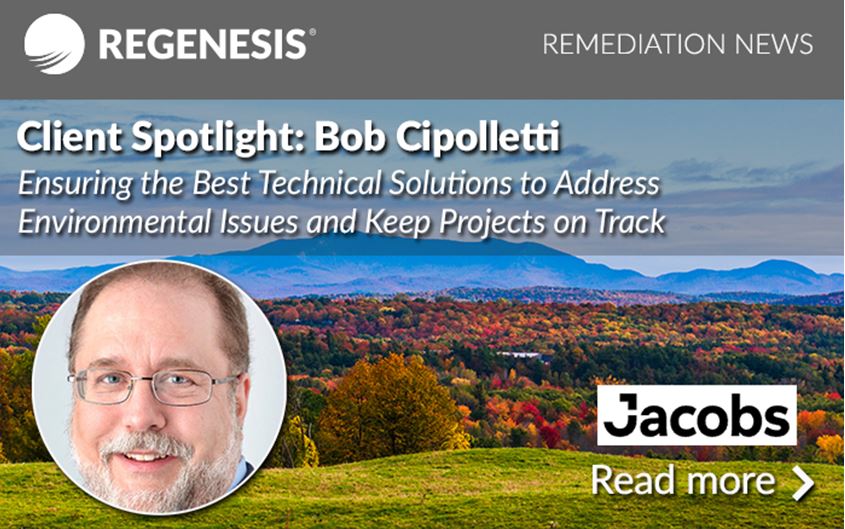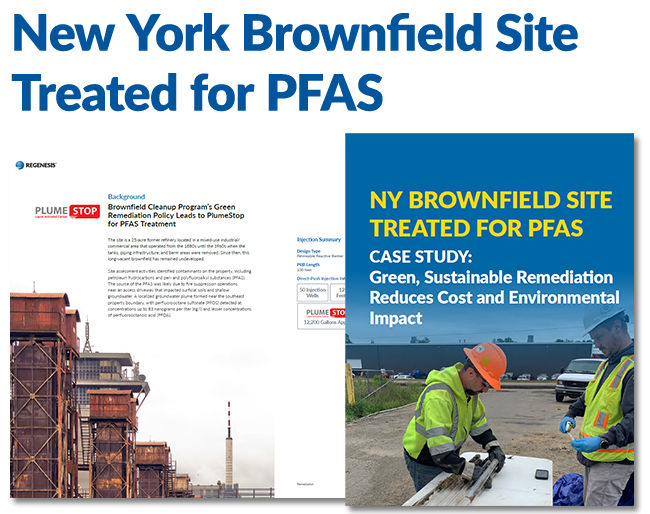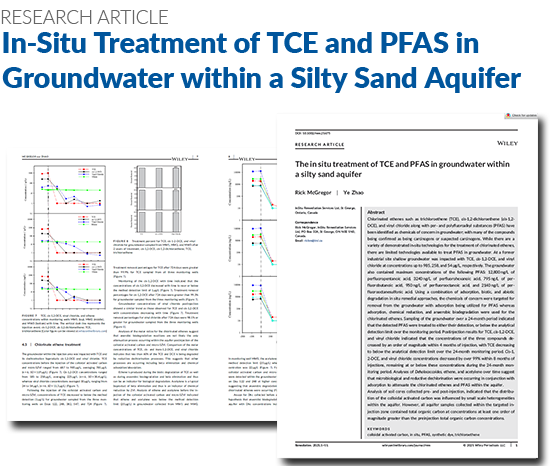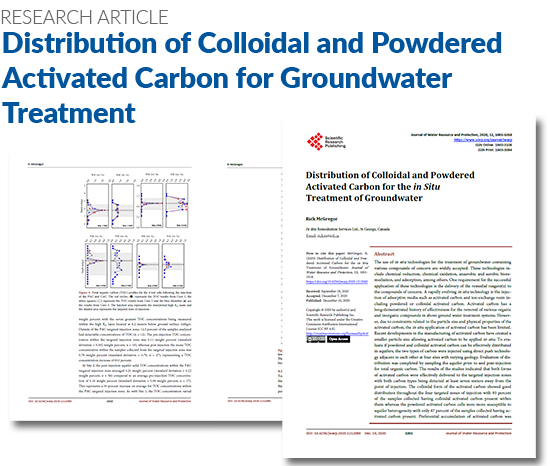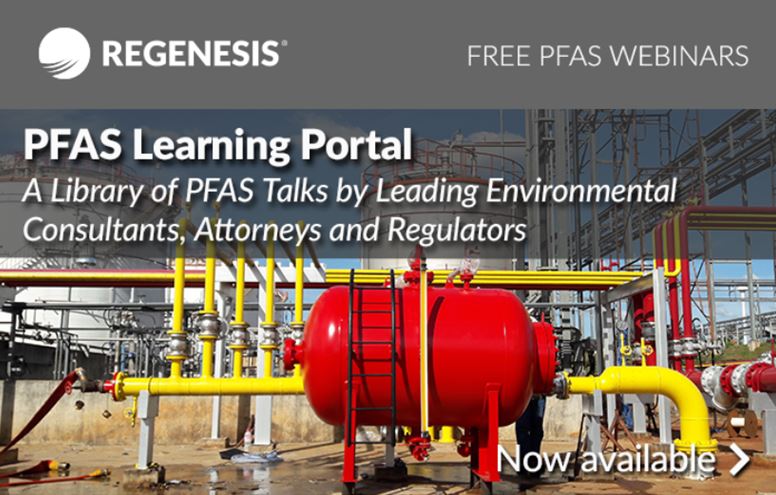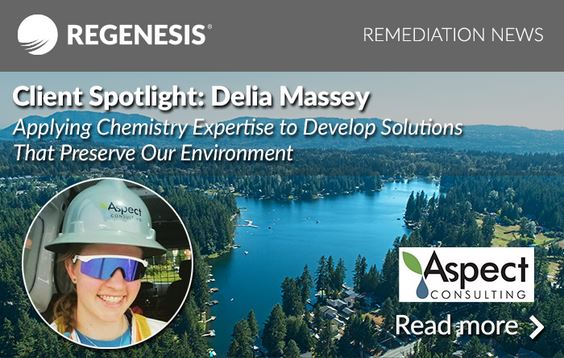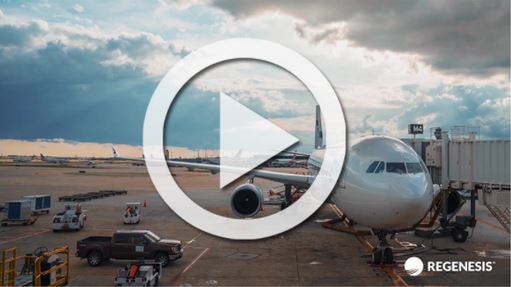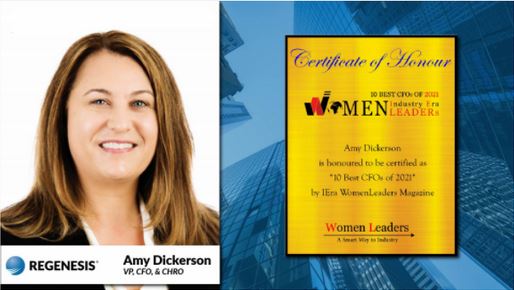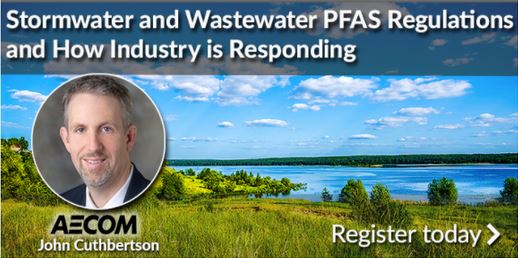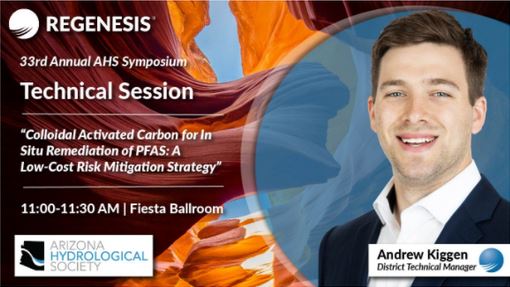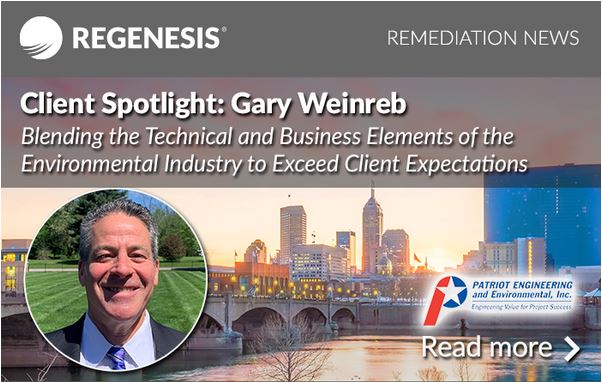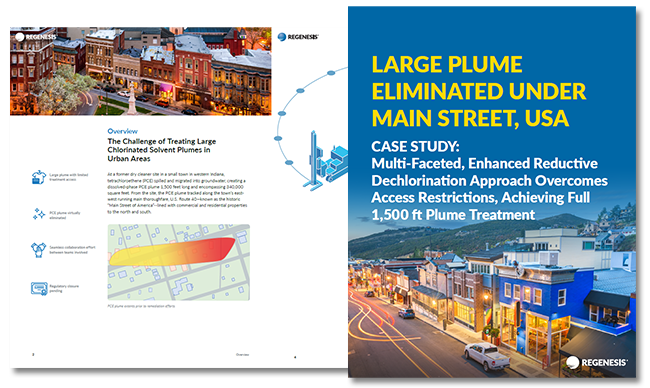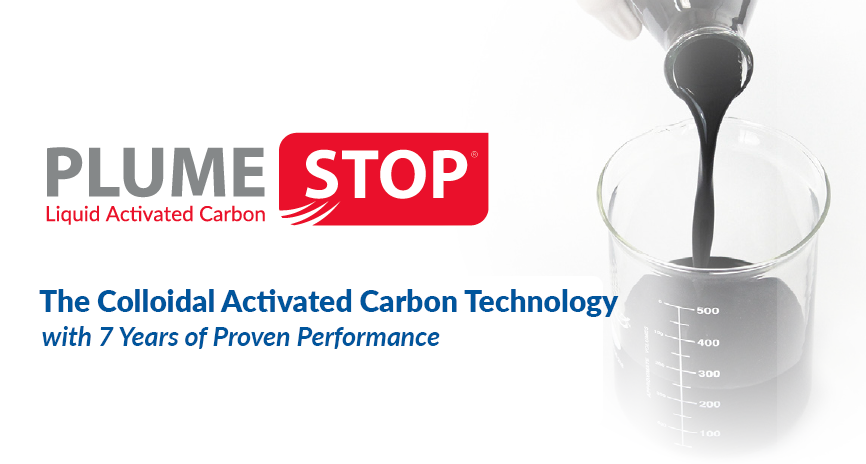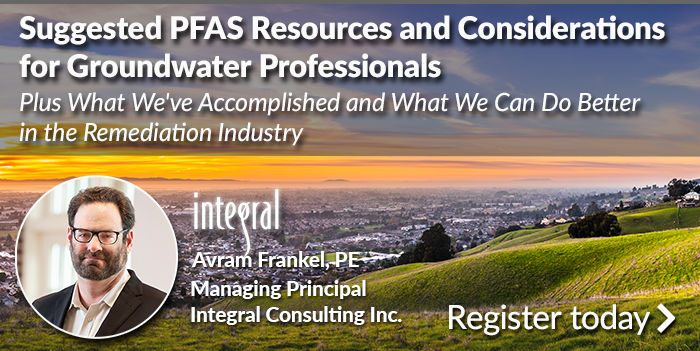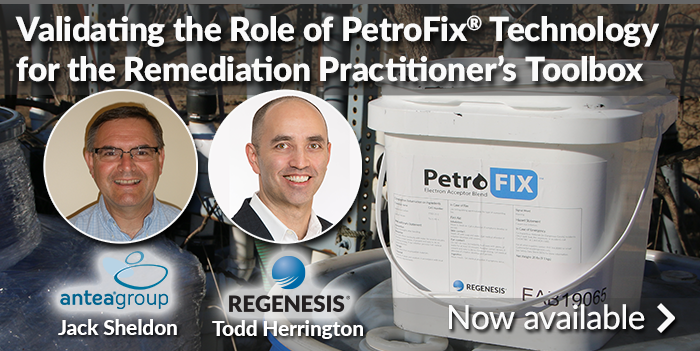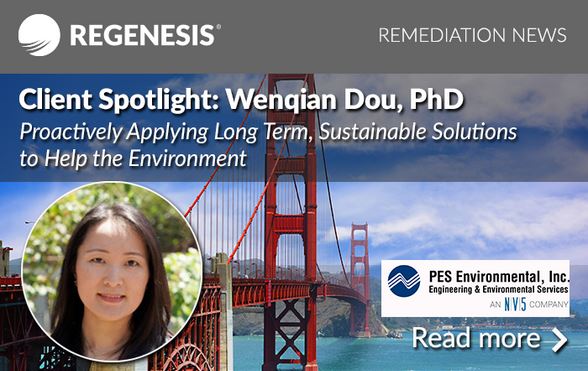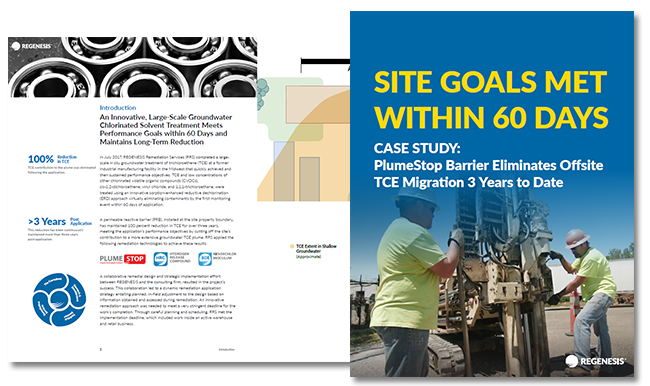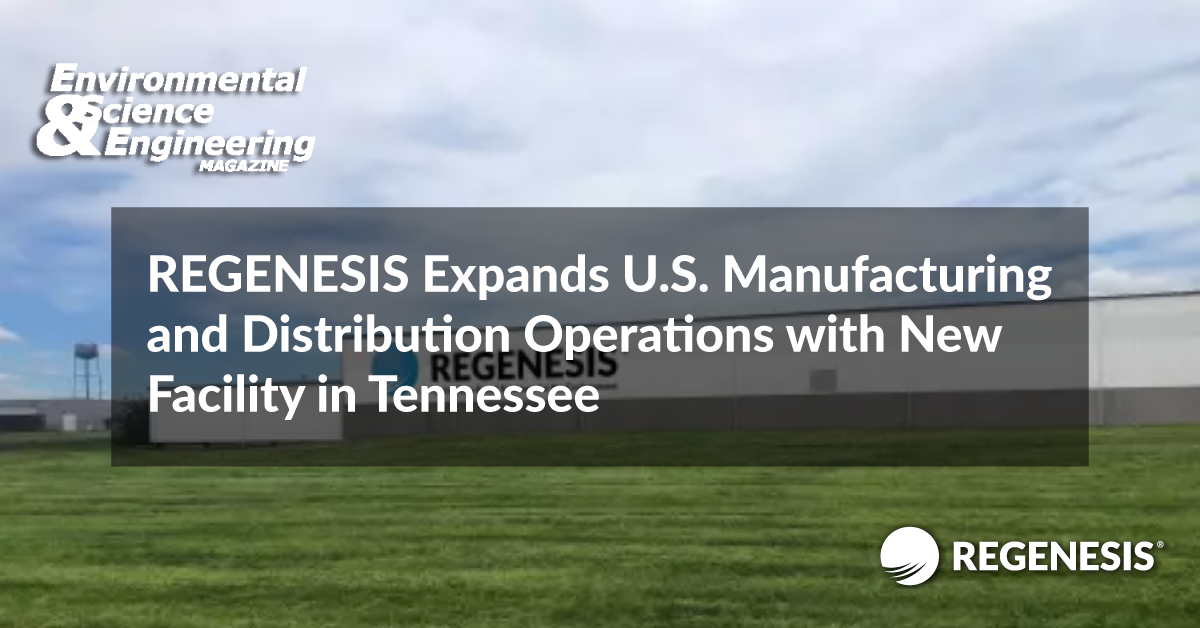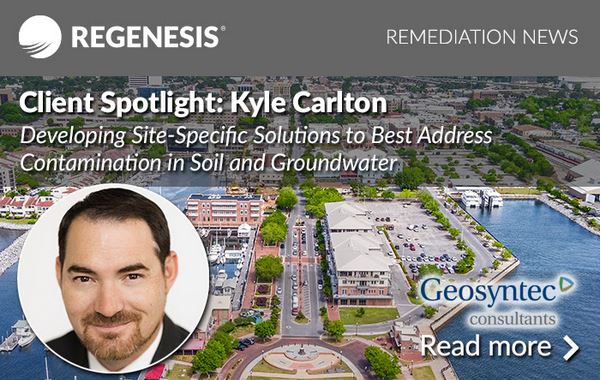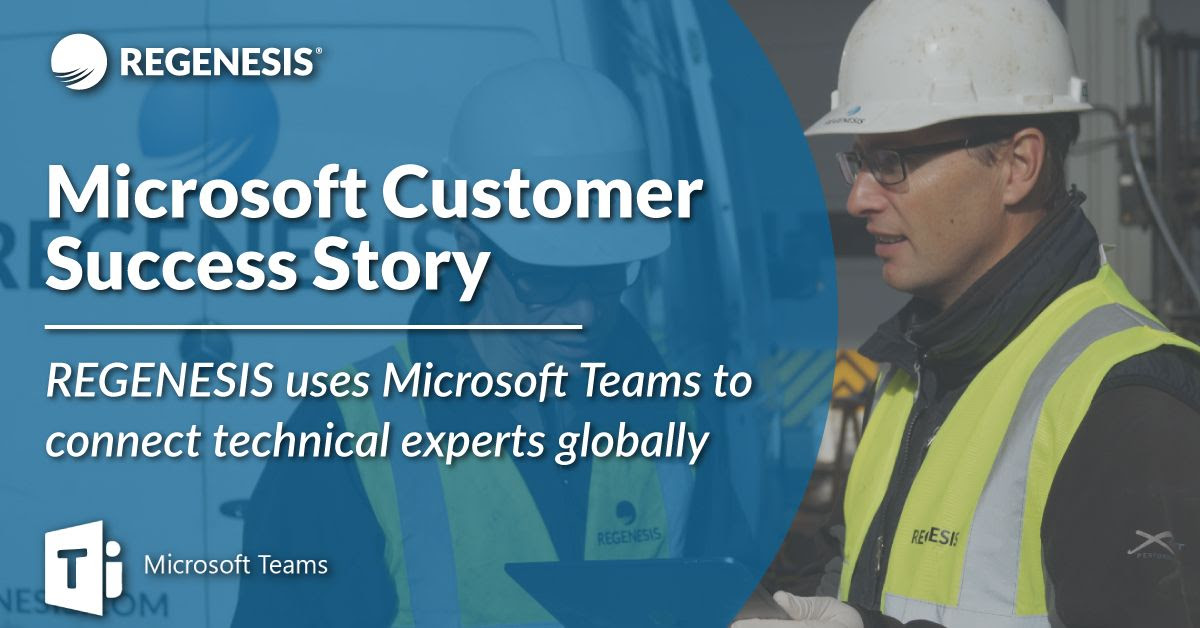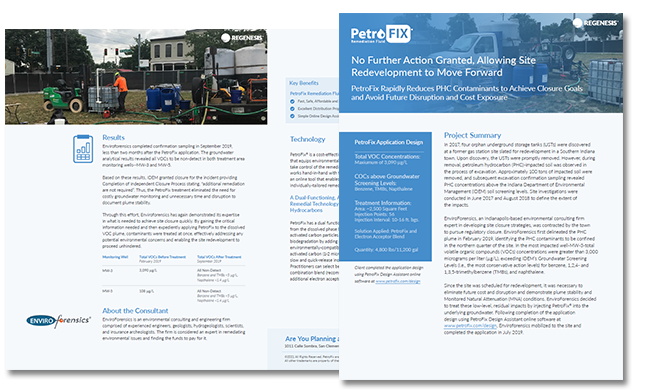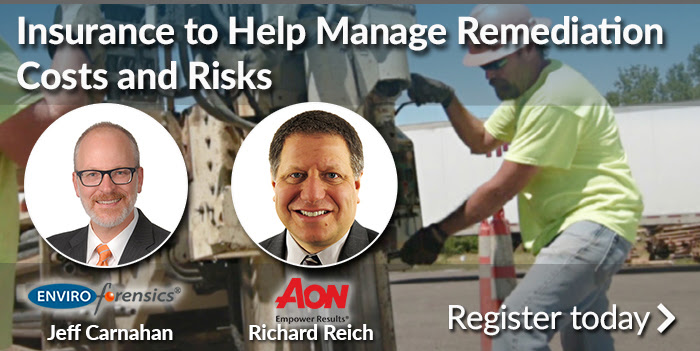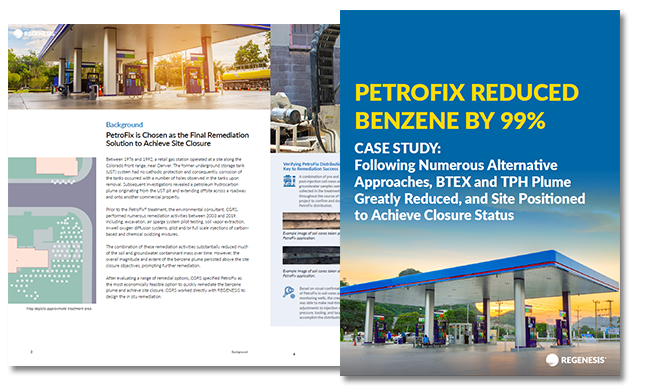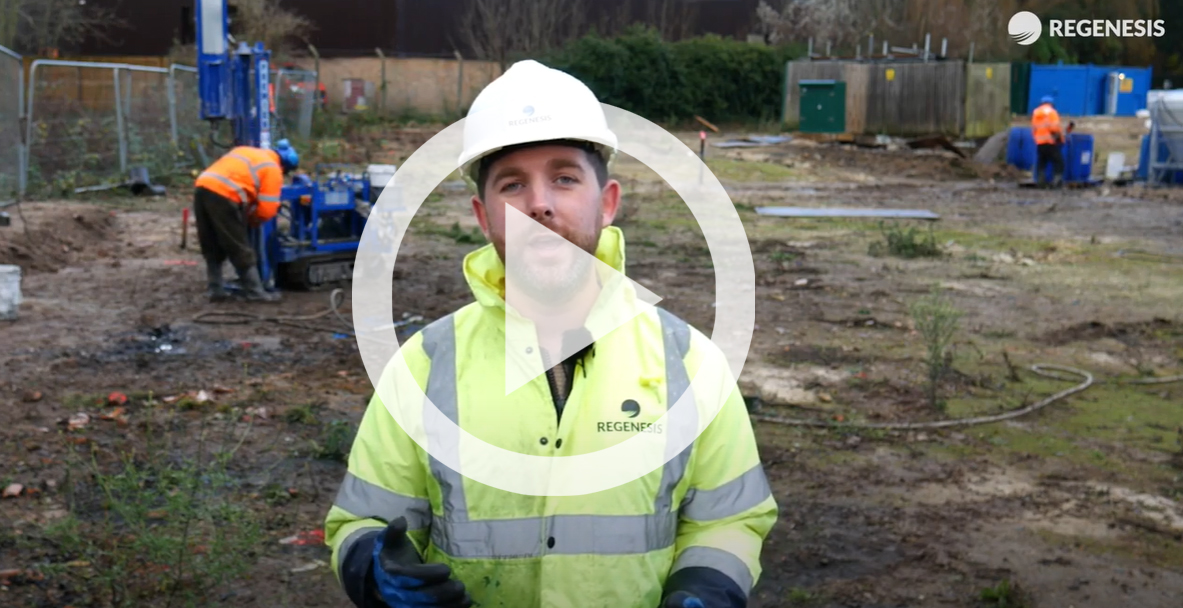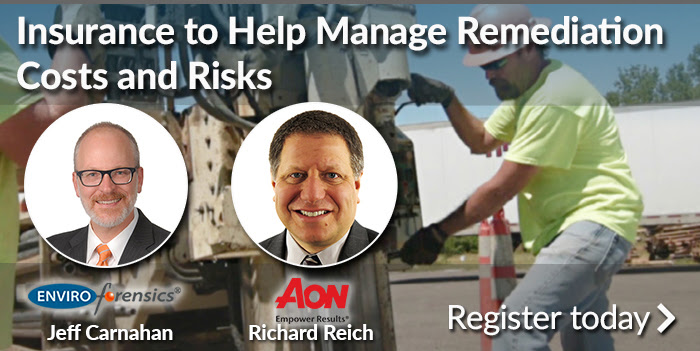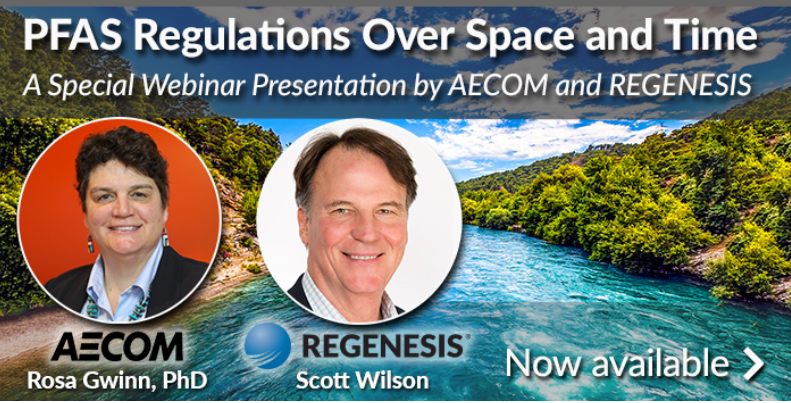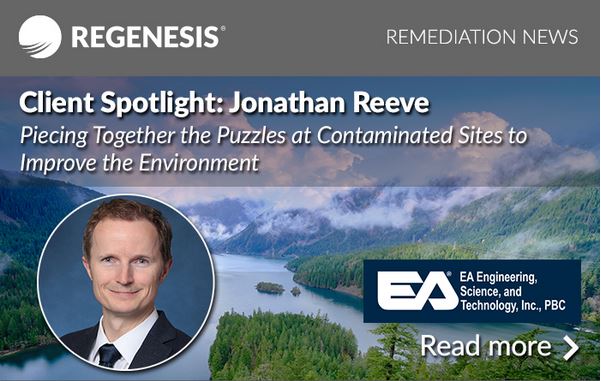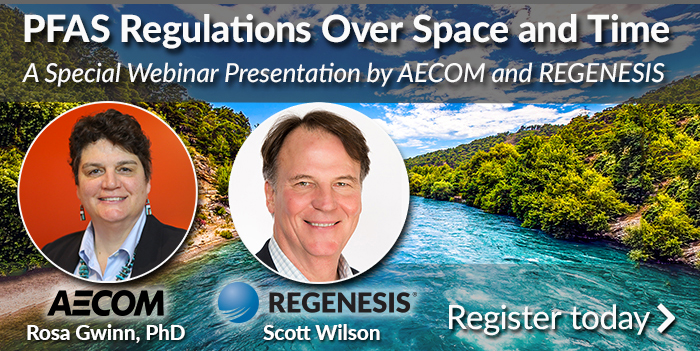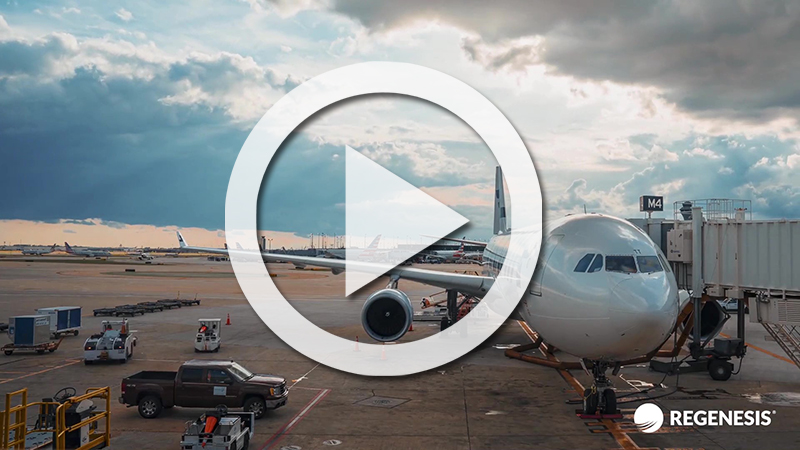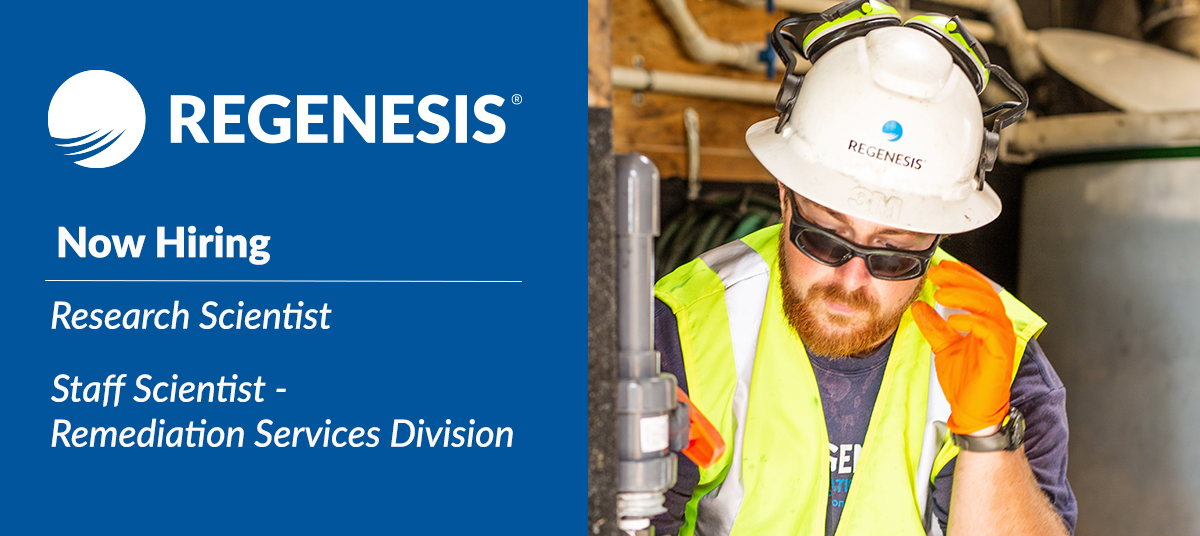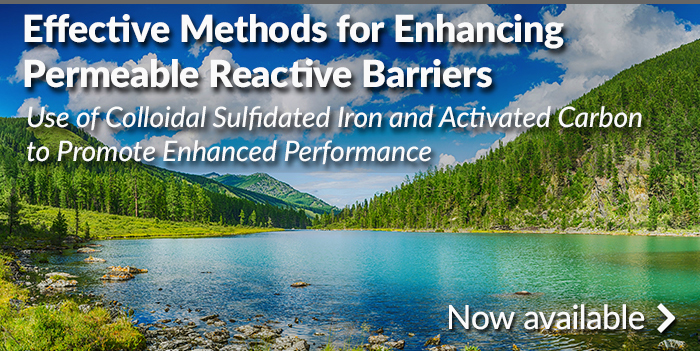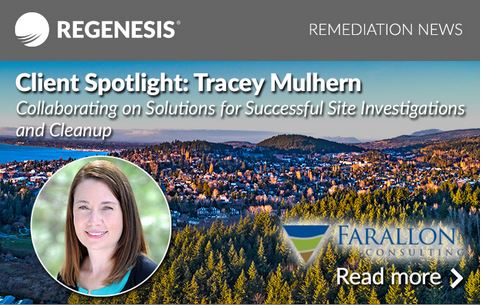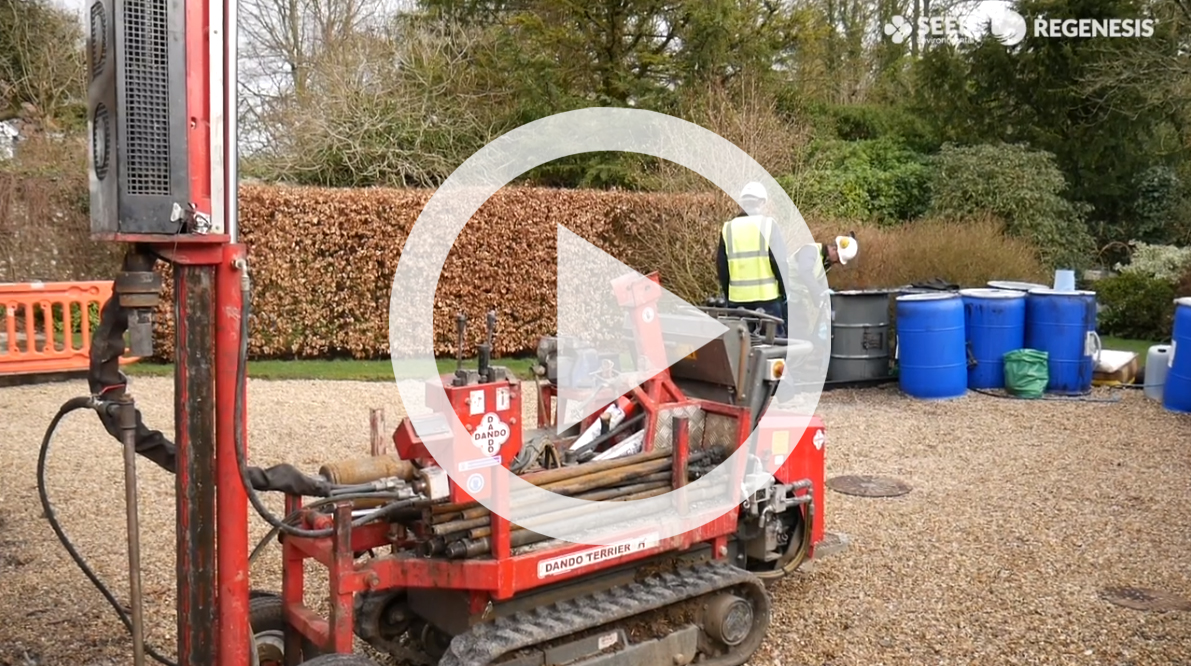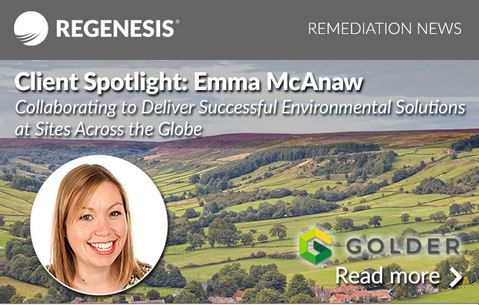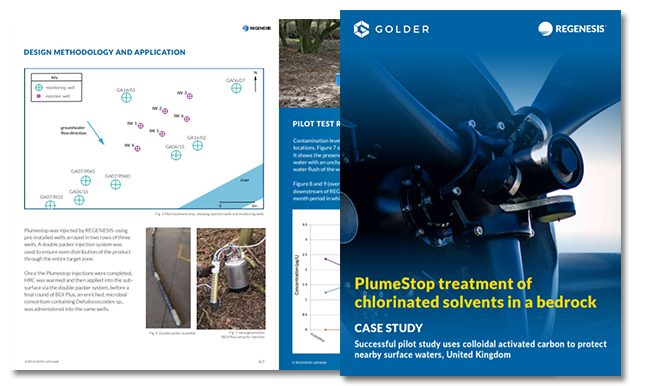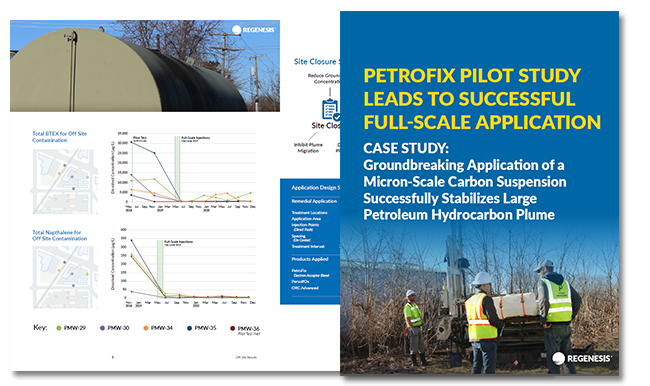October 2021 Newsletter
Client Spotlight: Bob Cipolletti
As a key member of Jacobs Engineering Group, Inc., Bob Cipolletti serves as Aviation Environmental Lead and Technology Manager for Jacobs’ Tier 1 Client Program, and as the firm’s Environmental Regional Solutions Leader for Jacobs’ North Region, in the Americas. In his current role as Technology Manager, Cipolletti is responsible for ensuring the best technical solutions and resources are provided for his clients’ projects, and at the highest quality standard. In his role as Aviation Environmental Lead, he is in charge of advancing the firm’s industry leading environmental solutions and capabilities with Jacobs’ airport client base.
Subscribe To Our Monthly Newsletters
Case Study: New York Brownfield Site Treated for PFAS
This case study reviews a 25-acre former refinery located in a mixed-use industrial/commercial area that was contaminated with PFAS. Benchmark Environmental Engineering & Science, PLLC & TurnKey Environmental Restoration, LLC (Benchmark & TurnKey), a leading engineering and redevelopment consulting company headquartered in Buffalo, New York, engaged REGENESIS for an in situ remedy that would effectively and economically cut off the plume and prevent migration of PFAS offsite.
Eliminate the Risk of PFAS with Colloidal Activated Carbon
In situ remediation with colloidal activated carbon eliminates risk of PFAS contamination in soil and groundwater at a low-cost. By coating flux zones of an aquifer with colloidal activated carbon, a permeable sorption barrier is created in situ, purifying groundwater as it passively migrates. PFAS constituents from up-gradient source zones are rapidly sorbed to the carbon and removed from the mobile dissolved phase. By removing PFAS from the mobile phase, the route of exposure to down-gradient receptors is eliminated, thereby eliminating the down-gradient public health risk associated with PFAS.
Third-Party Research Articles on Colloidal Activated Carbon and PFAS by Rick McGregor of IRSL
This article published in Wiley’s Remediation Journal reviews a case study of in-situ treatment of TCE and PFAS in groundwater at an industrial site within a silty sand aquifer. Using a combination of adsorption, biotic, and abiotic degradation in-situ remedial approaches, the chemicals of concern were targeted for removal from the groundwater with adsorption being utilized for PFAS whereas adsorption, chemical reduction, and anaerobic biodegradation were used for the chlorinated ethenes.
Third-Party Research Articles on Colloidal Activated Carbon and PFAS by Rick McGregor of IRSL
Third-Party Research Articles on Colloidal Activated Carbon and PFAS by Rick McGregor of IRSL
This article published in Frontiers in Environmental Chemistry reviews a case study of the effect of heterogeneity on the distribution of colloidal activated carbon (CAC) and subsequent treatment of PFAS at a site with a multiple aquifer system. The site’s geology varied from a silty sand to sand to fractured bedrock with all three units being impacted by PFAS and BTEX.
PFAS Learning Portal
Sign Up for the Upcoming Webinar with Leading Environmental Attorney Ned Witte
In this webinar we are pleased to have a special presentation from Ned Witte, Attorney at Godfrey & Kahn, S.C. Ned’s presentation will discuss collateral consequences of identifying PFAS as a CERCLA hazardous substance. This webinar takes place Thursday, October 28th, 2021 at 11am pacific / 2pm eastern.
Webinar Recording with North America Industrial PFAS Lead at AECOM John Cuthbertson Now Available
Questions?
REGENESIS has remediation experts based worldwide to assist you in your brownfield site cleanup. As the technology leader in advanced bioremediation solutions, we can help ensure success on your next remediation project. Use the map on our website to find your regional REGENESIS contact today.
September 2021 Newsletter
Client Spotlight: Delia Massey
For Delia Massey, Project Engineer for Aspect Consulting, LLC, a leading environmental, water resources and geotechnical consulting firm based in the Pacific Northwest, the opportunity to apply her chemistry expertise for solutions toward preserving our environment has been satisfying. “I learned about environmental engineering from a coworker and realized it was the perfect marriage of my analytical chemistry background and my interest in cleaning up the environment. This led to my Master’s in Environmental Engineering and helped launch my career in environmental consulting.” Learn more in our client spotlight.
Subscribe To Our Monthly Newsletters
REGENESIS In the News: PFAS-Contaminated Drinking Water – A Growing Concern for Airports
This article published in Airport Business Magazine discusses why PFAS contamination in groundwater is a growing concern for airports, and the role that in situ colloidal activated carbon (CAC) treatments are playing in mitigating risk at airport facilities globally. Read the full article below.
A Proven Approach to Eliminate PFAS Risk at Airport Sites
REGENESIS has applied PlumeStop, a proven colloidal activated carbon remediation technology, to eliminate PFAS risk at airport sites in the US and in Europe. Applied in situ at low pressure, PlumeStop coats the aquifer surface and acts like a purifying filter, removing mobile, dissolved-phase PFAS contaminants from groundwater. PlumeStop replaces costly pump and treat systems and creates zero waste stream. Watch the video to learn more about how PlumeStop eliminates PFAS risk at airport sites.
Eliminate the Risk of PFAS with Colloidal Activated Carbon
In situ remediation with colloidal activated carbon eliminates risk of PFAS contamination in soil and groundwater at a low-cost. By coating flux zones of an aquifer with colloidal activated carbon, a permeable sorption barrier is created in situ, purifying groundwater as it passively migrates. PFAS constituents from up-gradient source zones are rapidly sorbed to the carbon and removed from the mobile dissolved phase. By removing PFAS from the mobile phase, the route of exposure to down-gradient receptors is eliminated, thereby eliminating the down-gradient public health risk associated with PFAS.
REGENESIS CFO Amy Dickerson Named to Top 10 CFO’s in Industry Era Leaders Magazine
Amy Dickerson, VP, CFO, & CHRO of REGENESIS, has been recognized as one of the 10 Best CFOs of 2021 by IEra WomenLeaders Magazine in their most recent issue! Read the full write-up on Amy and her continued accomplishments here.
Sign Up for the Upcoming Webinar with AECOM Associate Vice President John Cuthbertson
In this webinar we are pleased to have as a special guest speaker John Cuthbertson, Associate Vice President and North America Industrial PFAS Lead at AECOM. Mr. Cuthbertson’s presentation will look at stormwater and wastewater PFAS regulations and how industry is responding. He will be joined by Scott Wilson, President & CEO at REGENESIS, who will share the latest developments about colloidal activated carbon’s use in the remediation industry as a low-cost method of eliminating PFAS risk.
Now Available: Webinar Discusses PFAS Resources and the State of the Remediation Industry
In this webinar we are pleased to have as a special presentation by Avram Frankel, P.E., Managing Principal at Integral Consulting Inc. His presentation discussed PFAS resources and considerations for groundwater professionals, plus what we’ve accomplished and what we can do better in the remediation industry. He was joined by Ryan Moore, PFAS Program Manager at REGENESIS, who discussed in situ treatment of PFAS using colloidal activated carbon to eliminate PFAS risk at a low cost. The full recording is now available.
Upcoming Events: 4th Annual Western Groundwater Congress and GRA Annual Meeting
Ryan Hardenburger, Project Geologist at REGENESIS, will be giving a presentation at the upcoming 4th Annual Western Groundwater Congress and GRA Annual Meeting, September 13th – 15th. At this same event, John Freim, Director of Material Science at REGENESIS, will be presenting “Enhancing the Performance of In-Situ Reactive Barriers Using a Synergistic Mixture of Colloidal Activated Carbon and Zero-Valent Iron”.
To learn more about the event and how to attend, visit the link below.
Upcoming Events: 33rd Annual AHS Symposium
Andrew Kiggen, District Technical Manager at REGENESIS, will be giving a presentation at the upcoming 33rd Annual AHS Symposium. This session will take place Friday, September 17th at 11am. Learn more about the upcoming symposium and how to attend at the link below.
August 2021 Newsletter
Client Spotlight: Gary Weinreb
As both a Principal and Sr. Project Manager for Patriot Engineering & Environmental, Inc., Gary Weinreb wears two different “hats”. As one of the firm’s Principals, he provides seasoned management and leadership expertise to the entire company and provides input to the Company’s Board of Managers regarding financial decisions and new business initiatives. Within Patriot’s Environmental Group, Weinreb focuses on technical review and preparation of reports, client communication and satisfaction, team management, and new business development. Learn more in our client spotlight.
Subscribe To Our Monthly Newsletters
Case Study: Large Plume Eliminated Under Main Street, USA
This case study reviews a former dry cleaner site in a small town in western Indiana, where tetrachloroethene (PCE) had spilled and migrated into groundwater, creating a dissolved-phase PCE plume 1,500 feet long and encompassing 340,000 square feet. From the site, the PCE plume tracked along the town’s eastwest running main thoroughfare, U.S. Route 40 – known as the historic “Main Street of America” – lined with commercial and residential properties to the north and south. Patriot Engineering, a leading Midwest environmental consulting firm, headquartered in Indianapolis, specified enhanced reductive dechlorination (ERD) as the most practical and economically viable method to effectively treat the large plume. Patriot’s strategy to achieve closure was to significantly reduce the PCE plume and then to demonstrate plume stability through post-remediation monitoring.
The Colloidal Activated Carbon Technology with 7 Years of Proven Performance
This year marks the 7 year anniversary of the commercial introduction of PlumeStop Liquid Activated Carbon, the ground-breaking colloidal activated carbon remediation technology which has revolutionized the remediation of groundwater and soil. PlumeStop colloidal activated carbon technology is built on a series of technical discoveries. Use the link below to learn more about these patented discoveries and PlumeStop’s 7 year track record of remedial success.
Turn Polluted Aquifers into Purifying Filters with PlumeStop
PlumeStop® Liquid Activated Carbon™ is a break-through groundwater remediation technology that reduces dissolved phase contaminant plumes in days. Composed of extremely fine particles of activated carbon (1‐2μm) suspended in water through a proprietary dispersion chemistry, PlumeStop flows into the subsurface at low pressure and achieves consistent, reliable distribution – a capability unlike any other form of activated carbon used for groundwater remediation today.
Upcoming Webinar Discusses PFAS Resources and the State of the Remediation Industry
In this webinar we are pleased to have a special presentation by Avram Frankel, P.E., Managing Principal at Integral Consulting Inc. His presentation will discuss PFAS resources and considerations for groundwater professionals, plus what we’ve accomplished and what we can do better in the remediation industry. He will be joined by Ryan Moore, PFAS Program Manager at REGENESIS, who will discuss in situ treatment of PFAS using colloidal activated carbon to eliminate PFAS risk at a low cost. This webinar starts Wednesday, August 25th, 2021 at 11am pacific/2pm eastern.
Now Available: Webinar with Leading Remediation Industry Expert Jack Sheldon of Antea Group
In this webinar we were pleased to have a special presentation by Jack Sheldon, Senior Remediation Specialist at Antea Group. His presentation discussed validating the role of PetroFix®technology for the remediation practitioner’s toolbox. He was joined by Todd Herrington, Global PetroFix Product Manager at REGENESIS.
Apply Activated Carbon Under Low Pressure to Treat Petroleum Hydrocarbons
PetroFix is an activated carbon remediation technology that is easily injected in situ under low pressure, distributes in the subsurface without fracturing, and includes electron acceptors to stimulate biodegradation of petroleum contaminants in soil and groundwater. This cost-effective technology is designed to remediate petroleum spills and provide immediate results for gas stations and UST sites. It works with the PetroFix Design Assistant™, an online design tool that enables users to individually tailor their site designs and self-apply PetroFix.
July 2021 Newsletter
Client Spotlight: Wenqian Dou, PhD.
While growing up in a small village in China in the early ’80s, Wenqian Dou, PhD, Associate Engineer with PES Environmental, Inc., became keenly aware of the impact manufacturing had on the environment. She shares, “In those early days, I heard people, including my parents, talking about how these changes were necessary sacrifices for China’s economic growth and for better living conditions. However, I always wondered why the environment had to be sacrificed for economic growth.” In her current role, Dou designs, implements, operates and monitors various remedies to address contaminants in indoor air, soil vapor, soil, and groundwater.
Subscribe To Our Monthly Newsletters
PlumeStop Application Paves the Way for Redevelopment
This case study reviews a contaminated chlorinated solvent site in northern California where advanced design verification testing and predictive modeling methods were used to guide a remarkably successful in-situ remediation effort. PES Environmental, Inc. (PES) of Novato, California, was selected by the developer as their Environmental Consultant for this project. When PES engaged REGENESIS on this project, a better understanding of contaminant flux was needed. By understanding the contaminant flux, a cost-effective remediation plan could be designed, specifically engineered to achieve a project goal. In this case, the goal was to fully remediate the CVOCs in the target treatment areas within two years following application of the treatment approach.
The Colloidal Activated Carbon Technology with 7 Years of Proven Performance
This year marks the 7 year anniversary of the commercial introduction of PlumeStop Liquid Activated Carbon, the ground-breaking colloidal activated carbon remediation technology which has revolutionized the remediation of groundwater and soil. PlumeStop colloidal activated carbon technology is built on a series of technical discoveries. Use the link below to learn more about these patented discoveries and PlumeStop’s 7 year track record of remedial success.
Turn Polluted Aquifers into Purifying Filters with PlumeStop
PlumeStop® Liquid Activated Carbon™ is a break-through groundwater remediation technology that reduces dissolved phase contaminant plumes in days. Composed of extremely fine particles of activated carbon (1‐2μm) suspended in water through a proprietary dispersion chemistry, PlumeStop flows into the subsurface at low pressure and achieves consistent, reliable distribution – a capability unlike any other form of activated carbon used for groundwater remediation today.
PlumeStop Eliminates Offsite TCE Migration Meeting Site Goals in 60 Days at Industrial Site
This case study reviews the site of a large-scale in situ groundwater treatment of trichloroethene (TCE) at a former industrial manufacturing facility in the Midwest that quickly achieved and then sustained performance objectives. TCE and low concentrations of other chlorinated volatile organic compounds (CVOCs), cis-1,2-dichloroethene, vinyl chloride, and 1,1,1-trichloroethane, were treated using an innovative sorption-enhanced reductive dechlorination (ERD) approach virtually eliminating contaminants by the first monitoring event within 60 days of application. A permeable reactive barrier (PRB), installed at the site property boundary, has maintained 100 percent reduction in TCE for over three years, meeting the application’s performance objectives by cutting off the site’s contribution to a more extensive groundwater TCE plume.
Now Available: Webinar with Leading Remediation Industry Expert Jack Sheldon of Antea Group
In this webinar we were pleased to have a special presentation by Jack Sheldon, Senior Remediation Specialist at Antea Group. His presentation discussed validating the role of PetroFix®technology for the remediation practitioner’s toolbox. He was joined by Todd Herrington, Global PetroFix Product Manager at REGENESIS.
REGENESIS New State of the Art Manufacturing and Distribution Warehouse Featured in ES&E
REGENESIS was recently featured in Environmental Science & Engineering (ES&E) Magazine in an article entitled, “REGENESIS Expands U.S. Manufacturing and Distribution Operations with New Facility in Tennessee.” The new warehouse enhances the production and warehousing of our Land Science division’s full-suite of vapor mitigation technologies, as well as REGENESIS’ soil and groundwater remediation solutions, offering clients greater flexibility, while providing improved control over delivery times due to the facility’s central location. Read the full article below.
June 2021 Newsletter
Client Spotlight: Kyle Carlton
Kyle Carlton, Project Geologist for Geosyntec Consultants, Inc,. shares, “The variety of projects and technology in this industry were very attractive to me early in my career. Every site is different, and you are continually challenged to develop site-specific solutions to best address contamination in soil and groundwater.” Throughout his career, he has provided detailed planning and execution of directional drilling and horizontal well projects, managed site projects related to the assessment and remediation of soil, surface water, and groundwater contamination, and managed Phase I and Phase II assessments, and vapor intrusion projects.
Subscribe To Our Monthly Newsletters
Environmental Directions Radio Interview – Scott Wilson REGENESIS – State of PFAS Risk and Liability
Scott Wilson, President & CEO of REGENESIS, interviewed by local radio personality, Nancy Pearlman host of the talk show ‘Environmental Directions’ on the state of PFAS risk and liability. Recently, PFAS contamination in groundwater has been identified as an emerging threat to clean drinking water supplies. These chemicals are difficult to treat due to their very stable nature and resultant persistence in environment. In this interview Scott Wilson discusses PlumeStop, which demonstrates a breakthrough, unprecedented ability to remove PFAS quickly, permanently, and cost-effectively, thereby protecting the environment and human health from the threat of PFAS contamination.
REGENESIS Featured by Microsoft Using Teams to Connect Global Employees for the Annual Company Meeting
We are excited to announce our spotlight feature with Microsoft showcasing our hugely successful annual company meeting using Microsoft Teams, which allowed our global team to safely and virtually communicate face-to-face this year amid travel restrictions. For its annual company meeting in San Clemente, California, REGENESIS brings colleagues from across its global organization together for four days of trainings, presentations, and the rare opportunity to mingle face-to-face. Read the full article below.
No Further Action Granted, Allowing Site Redevelopment to Move Forward After PetroFix Application
This case study reviews four orphan underground storage tanks (USTs) that were discovered at a former gas station site slated for redevelopment in a Southern Indiana town. Since the site was scheduled for redevelopment, it was necessary to eliminate future cost and disruption and demonstrate plume stability and Monitored Natural Attenuation (MNA) conditions.
Apply Activated Carbon Under Low Pressure to Treat Petroleum Hydrocarbons
PetroFix is an activated carbon remediation technology that is easily injected in situ under low pressure, distributes in the subsurface without fracturing, and includes electron acceptors to stimulate biodegradation of petroleum contaminants in soil and groundwater. This cost-effective technology is designed to remediate petroleum spills and provide immediate results for gas stations and UST sites. It works with the PetroFix Design Assistant™, an online design tool that enables users to individually tailor their site designs and self-apply PetroFix.
Upcoming Environmental Webinar Discusses Insurance to Manage Remediation Costs and Risks
In this webinar we were pleased to have as a special guest speakers Jeff Carnahan, President of EnviroForensics, and Richard Reich, Managing Director and Central Regional Leader at Aon Risk Services Central. Their presentation will discuss historical and contemporary insurance to help manage remediation costs and risks.The webinar starts Thursday, June 17th, 2021 at 11am pacific/2pm eastern.
Questions?
REGENESIS has remediation experts based worldwide to assist you in your brownfield site cleanup. As the technology leader in advanced bioremediation solutions, we can help ensure success on your next remediation project. Use the map on our website to find your regional REGENESIS contact today.
May 2021 Newsletter
Client Spotlight: Chris Poulsen
When Chris Poulsen, Principal Engineer for Farallon Consulting, looks to the future of environmental remediation, he sees a two-sided coin of sorts – on side showing job security due to the high demand for environmental services, and the other reflecting how far we still need to go to treat the multitude of contaminated sites. He shares, “During my first job in consulting, a manager at Union Pacific Railroad told me all of the environmental cleanups would be finished before the year 2000. Today there is no shortage of work, and with emerging contaminants such as PFAS, we are going to need more engineers in the foreseeable future.”
Subscribe To Our Monthly Newsletters
PetroFix Reduces Benzene by 99% Positioning the Site to Achieve Regulatory Closure
This case study reviews a retail petroleum station with a petroleum hydrocarbon plume in groundwater originating from the UST pit and extending offsite across a roadway and onto another commercial property. After evaluating a range of remedial options, the environmental consultant CGRS specified PetroFix as the most economically feasible option to quickly remediate the benzene plume and achieve site closure.
Apply Activated Carbon Under Low Pressure to Treat Petroleum Hydrocarbons
PetroFix is an activated carbon remediation technology that is easily injected in situ under low pressure, distributes in the subsurface without fracturing, and includes electron acceptors to stimulate biodegradation of petroleum contaminants in soil and groundwater. This cost-effective technology is designed to remediate petroleum spills and provide immediate results for gas station and UST sites. It works with the PetroFix Design Assistant™, an online design tool that enables users to individually tailor their site designs and self-apply PetroFix.
Protection of a Chalk Stream Using an In-Situ Permeable Reactive Barrier with PetroFix and ORC Advanced
This video shows a project where the integrated remediation of petroleum hydrocarbons in soils and groundwater was carried out by Rake Remediation. It was a sensitive project, due to the location next to a chalk stream. The use of an injectable in-situ permeable reactive barrier (I-PRB) made protection of the stream safe and simple, reducing remediation time and cost. The barrier consisted of the REGENESIS technologies PetroFix and ORC Advanced.
REGENESIS CEO Scott Wilson Discusses Inspiring the Next Generation About Sustainability and the Environment
President and CEO of REGENESIS, Scott Wilson, was recently featured in an article released by Authority Magazine titled, “5 Things We Must Do to Inspire the Next Generation About Sustainability and the Environment.” He discusses how to inspire sustainability, the initiatives that REGENESIS is taking to address climate change and sustainability, and lifestyle tweaks that the general public can do to be more sustainable and help address the climate change challenge. Read the full article below.
Now Available: Webinar with Leading Remediation Industry Expert Jack Sheldon of Antea Group
In this webinar we were pleased to have a special presentation by Jack Sheldon, Senior Remediation Specialist at Antea Group. His presentation discussed validating the role of PetroFix®technology for the remediation practitioner’s toolbox. He was joined by Todd Herrington, Global PetroFix Product Manager at REGENESIS.
Webinar on PFAS Regulations and a Low-Cost Solution to Eliminate Risk via In-Situ Treatment
April 2021 Newsletter
Client Spotlight: Johnathan Reeve
Jonathan Reeve, a Senior Hydrogeologist with EA Engineering, Science, and Technology, Inc. PBC, is drawn to the challenge of contaminated site investigation and remediation because they are like solving a mystery, one clue at a time. He begins, “As a Hydrogeologist, I investigate all of the geologic aspects of contaminated sites, with an emphasis on groundwater movement. Groundwater is a media that is not easily observed and always represents a big puzzle at a site. Putting together the available pieces of evidence to determine the groundwater pathway from a source to a receptor can be quite challenging and gratifying.”
Subscribe To Our Monthly Newsletters
REGENESIS and AECOM Join the Aviation Pros Podcast: A Solution for the PFAS Problem at Airports
For the aviation industry, PFAS are most commonly found in the foam used to combat airfield fires. Scott Wilson, CEO and President of REGENESIS, was recently featured on the AviationPros Podcast: The PFAS Problem alongside Rosa Gwinn, Global PFAS Technical Leader for AECOM. The episode discusses the harm PFAS pose to people and the environment – and what can be done about them. Listen to the full episode using the link below.
Webinar on PFAS Regulations and a Low-Cost Solution to Eliminate Risk via In-Situ Treatment
Eliminate the Risk of PFAS with Colloidal Activated Carbon
In situ remediation with colloidal activated carbon eliminates risk of PFAS contamination in soil and groundwater at a low-cost. By coating flux zones of an aquifer with colloidal activated carbon, a permeable sorption barrier is created in situ, purifying groundwater as it passively migrates. PFAS constituents from up-gradient source zones are rapidly sorbed to the carbon and removed from the mobile dissolved phase. By removing PFAS from the mobile phase, the route of exposure to down-gradient receptors is eliminated, thereby eliminating the down-gradient public health risk associated with PFAS.
A Proven Approach to Eliminate PFAS Risk at Airport Sites
REGENESIS has applied PlumeStop, a proven colloidal activated carbon remediation technology, to eliminate PFAS risk at airport sites in the US and in Europe. Applied in situ at low pressure, PlumeStop coats the aquifer surface and acts like a purifying filter, removing mobile, dissolved-phase PFAS contaminants from groundwater. PlumeStop replaces costly pump and treat systems and creates zero waste stream. Watch the video to learn more about how PlumeStop eliminates PFAS risk at airport sites.
Fuel Spill from Truck Rollover Receives No Further Action Following PetroFix Application
This case study reviews a semi-truck that was hauling gasoline and diesel and overturned into a dry irrigation ditch in Montana. The diesel tanks ruptured and released fuel into the ditch, impacting the shallow water table with petroleum hydrocarbons (PHCs), including benzene, toluene, ethylbenzene, and xylenes (BTEX). The irrigation ditch feeds a larger irrigation canal that empties into the Yellowstone River. In response, an area of approximately 2,500 square feet area was excavated and approximately 800 tons of the grossly impacted soils were removed. Following the emergency response effort, Pioneer Technical Services, Inc. (Pioneer) reviewed the emergency response report, completed a site inspection and met with the property owner to discuss the emergency response clean-up reconstruction methods and materials to be used.
Apply Activated Carbon Under Low Pressure to Treat Petroleum Hydrocarbons
We’re Hiring! Join Our Team of Industry-Leading Scientists
Interested in joining a company that values smart, dedicated and innovative professionals? Every day the team at REGENESIS is working on environmental solutions to help restore clean water to communities and provide remedial technologies to ensure the world is a better place. Scientists, geologists, and highly-skilled engineers work side by side to develop industry-leading remedies to clean up toxic contaminants resulting from industrial manufacturing, dry cleaning operations, leaking underground storage tanks, and more. Be a part of a global organization recognized as the world’s leader in in situ remediation technologies and vapor intrusion solutions and make a lasting impact on the world.
Stay Up-to-date on Industry Technologies With Our Remediation Training Library
Questions?
REGENESIS has remediation experts based worldwide to assist you in your brownfield site cleanup. As the technology leader in advanced bioremediation solutions, we can help ensure success on your next remediation project. Use the map on our website to find your regional REGENESIS contact today.
March 2021 Newsletter
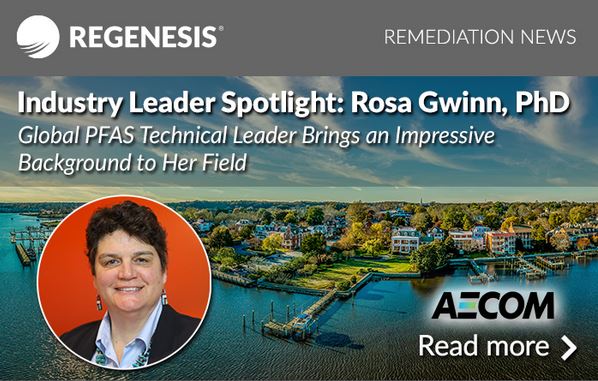
Client Spotlight: Rosa Gwinn, PhD
By combining academics with her professional environmental remediation experience, Rosa Gwinn, PhD, Global PFAS Technical Leader with AECOM, brings an impressive background to her field. She shares, “In my current role, I am responsible for sharing our PFAS thought leadership, ensuring the technical execution of PFAS work, collaborating internally and externally on solutions, and developing a best-in-class performance on PFAS-related projects. However, I also enjoy providing opportunities to promising and capable employees who are not as far along in their careers as I am.” Learn more in our client spotlight.
Subscribe To Our Monthly Newsletters
Webinar on PFAS Regulations and a Low-Cost Solution to Eliminate Risk via In-Situ Treatment
Cost-Effective Treatment to Eliminate the Risk from PFAS from REGENESIS in the News
Colloidal Activated Carbon Demonstrates Effective, In-Place Removal of PFAS from Groundwater
This article published in Technology Networks discusses a novel, colloidal form of activated carbon that demonstrates effective, in-place removal of PFAS from groundwater. Written by Kristen Thoreson, PhD, Vice President of Research and Development at REGENESIS, it discusses why PFAS in groundwater is a daunting environmental challenge, current methods for PFAS removal from groundwater, and a novel PFAS groundwater treatment technology that is effective and lower cost than other current methods: colloidal activated carbon passive barriers.
Eliminate the Risk of PFAS with Colloidal Activated Carbon
In situ remediation with colloidal activated carbon eliminates risk of PFAS contamination in soil and groundwater at a low-cost. By coating flux zones of an aquifer with colloidal activated carbon, a permeable sorption barrier is created in situ, purifying groundwater as it passively migrates. PFAS constituents from up-gradient source zones are rapidly sorbed to the carbon and removed from the mobile dissolved phase. By removing PFAS from the mobile phase, the route of exposure to down-gradient receptors is eliminated, thereby eliminating the down-gradient public health risk associated with PFAS.
Webinar on Effective Use of Colloidal Sulfidated ZVI and Activated Carbon in Permeable Reactive Barriers
In this webinar we were pleased to have a special presentation from three leading technical experts in the remediation industry – John Freim PhD, Ryan Moore CHMM, and Andrew Kavanagh of REGENESIS. This panel discussed using a synergistic mixture of colloidal sulfidated ZVI and activated carbon to promote the enhanced performance of in situ reactive barriers. The recording of this webinar is now available.
Stay Up-to-date on Industry Technologies With Our Remediation Training Library
Questions?
REGENESIS has remediation experts based worldwide to assist you in your brownfield site cleanup. As the technology leader in advanced bioremediation solutions, we can help ensure success on your next remediation project. Use the map on our website to find your regional REGENESIS contact today.
February 2021 Newsletter
Client Spotlight: Tracey Mulhern
Ask Tracey Mulhern, Associate Geologist with Farallon Consulting, what she likes most about her work and you’ll likely learn that providing superior client service is just one of the many aspects she enjoys. She begins, “I enjoy working with clients to come up with environmental solutions to meet their individual needs. I also enjoy the planning that goes into a site investigation or cleanup and seeing it completed.” Currently, Mulhern conducts project management of contaminated site investigation and cleanup at various sites throughout Washington. Learn more about Tracey’s work at Farallon in our client spotlight.
Subscribe To Our Monthly Newsletters
PlumeStop Eliminates Offsite TCE Migration Meeting Site Goals in 60 Days
This case study reviews the site of a large-scale in situ groundwater treatment of trichloroethene (TCE) at a former industrial manufacturing facility in the Midwest that quickly achieved and then sustained performance objectives. TCE and low concentrations of other chlorinated volatile organic compounds (CVOCs), cis-1,2-dichloroethene, vinyl chloride, and 1,1,1-trichloroethane, were treated using an innovative sorption-enhanced reductive dechlorination (ERD) approach virtually eliminating contaminants by the first monitoring event within 60 days of application. A permeable reactive barrier (PRB), installed at the site property boundary, has maintained 100 percent reduction in TCE for over three years, meeting the application’s performance objectives by cutting off the site’s contribution to a more extensive groundwater TCE plume.
Turn Polluted Aquifers into Purifying Filters with PlumeStop
Low-cost Bioremediation of Chlorinated Solvents
HRC is an engineered, hydrogen release compound designed specifically for enhanced, in situ anaerobic bioremediation of chlorinated compounds in groundwater or highly saturated soils. HRC enables enhanced anaerobic biodegradation by adding hydrogen (an electron donor) to groundwater and/or soil to increase the number and vitality of indigenous microorganisms able to perform the naturally occurring process of enhanced reductive dechlorination. Due to its capability of being applied via permanent wells, direct-push, and excavations, this reagent allows for clean, low-cost, non-disruptive application.
Accelerated Treatment of Intermediate Compounds
BDI Plus is designed to provide rapid, effective treatment of undesirable anaerobic dechlorination intermediate compounds such as dichloroethene (DCE) and vinyl chloride (VC), and is a low-cost means of enhancing the anaerobic biodegradation process. Once in place, this microbial consortium accelerates the rate of chlorinated contaminant degradation from parent compounds to intermediates like DCE and VC and completely through to harmless end products such as ethene and ethane. It is highly compatible with a range of electron donors.
Over 8 Million Cubic Feet of Groundwater Treated In 13 Days
This case study reviews the site of a large-scale enhanced reductive dechlorination (ERD) treatment of chlorinated volatile organic compounds (CVOCs) applied in a fractured bedrock aquifer at a voluntary remediation site in Pennsylvania. REGENESIS Remediation Services (RRS) began the application in May 2020 and completed it in less than 13 days, averaging nearly 7,000 gallons of fluid volume injected per day at this active facility. In total, more than 260,000 combined pounds of 3DME, CRS and BDI Plus were injected for ERD treatment of the CVOCs. The extensive injection well network and large injection volume required RRS to develop an innovative injection process and containment design.
Long-Term, Low-Cost Remediation of Chlorinated Solvents
A Liquid Iron Based-Reagent for the Enhanced In Situ Chemical Reduction (ISCR) of Chlorinated Contaminants
CRS (Chemical Reducing Solution) is an iron-based amendment for in situ chemical reduction (ISCR) of halogenated hydrocarbon contaminants such as chlorinated ethenes and ethanes. This highly efficient in situ remediation technology contains a form of liquid iron which provides better distribution than can be achieved by directly injecting a solid iron material into the subsurface. The product allows for seamless integration with anaerobic bioremediation, and is easy to apply with the electron donor 3-D Microemulsion.
Video Shows How PetroFix is Easily and Safely Applied to Effectively Treat Petroleum Contaminants
Questions?
REGENESIS has remediation experts based worldwide to assist you in your brownfield site cleanup. As the technology leader in advanced bioremediation solutions, we can help ensure success on your next remediation project. Use the map on our website to find your regional REGENESIS contact today.
January 2021 Newsletter
Client Spotlight: Emma McAnaw
Emma McAnaw is a Senior Hydrogeologist and experienced Project Manager at Golder, a global consulting and engineering firm. Emma’s international experience spans the manufacturing, waste, mining, power and infrastructure sectors. Based out of the UK, working at Golder has taken her to sites all over the UK, as well as Colombia, Bulgaria, Greece, and Gibraltar. As Project Manager, Emma enjoys seeing all the moving parts of a project coming together. At the same time, she also still likes being “hands-on” with the site investigation and remediation work which comes with managing junior staff. Learn more in our client spotlight.
Subscribe To Our Monthly Newsletters
PlumeStop Effectively Treats Chlorinated Solvents in Bedrock at UK Site
This case study reviews the site of a chlorinated solvent spill where REGENESIS was asked to provide a remediation solution for a Trichloroethylene (TCE) plume in the UK. The technical services team at REGENESIS worked closely with Golder to design and implement a novel solution that combined Plumestop, HRC and BDI+ to sorb and biologically degrade the contamination, rapidly and effectively reducing contamination downstream to nondetectable levels. The PlumeStop in situ permeable reactive barrier rapidly reduced downgradient contaminant concentrations and maintained these through a combination of sorption and biological degradation, protecting the adjacent surface water receptor.
Turn Polluted Aquifers into Purifying Filters with PlumeStop
Low-cost Bioremediation of Chlorinated Solvents
HRC is an engineered, hydrogen release compound designed specifically for enhanced, in situ anaerobic bioremediation of chlorinated compounds in groundwater or highly saturated soils. HRC enables enhanced anaerobic biodegradation by adding hydrogen (an electron donor) to groundwater and/or soil to increase the number and vitality of indigenous microorganisms able to perform the naturally occurring process of enhanced reductive dechlorination. Due to its capability of being applied via permanent wells, direct-push, and excavations, this reagent allows for clean, low-cost, non-disruptive application.
Accelerated Treatment of Intermediate Compounds
BDI Plus is designed to provide rapid, effective treatment of undesirable anaerobic dechlorination intermediate compounds such as dichloroethene (DCE) and vinyl chloride (VC), and is a low-cost means of enhancing the anaerobic biodegradation process. Once in place, this microbial consortium accelerates the rate of chlorinated contaminant degradation from parent compounds to intermediates like DCE and VC and completely through to harmless end products such as ethene and ethane. It is highly compatible with a range of electron donors.
Successful Pilot Study On Former Bulk Storage Site
This case study reviews a full-scale PetroFix remediation program that was designed and implemented at seven locations to treat petroleum hydrocarbons (PHCs) following a successful field pilot test. Two post-injection groundwater sampling events were completed in June and September 2019. In December 2019, a supplemental PetroFix injection was completed in the PHC source area onsite following the PersulfOx and ORC-A pretreatment step and groundwater equilibration. Working with REGENESIS, the environmental consulting firm Patriot Engineering developed a site closure strategy that included reducing groundwater concentrations, inhibiting plume migration, and demonstrating plume stability site-wide.
Apply Activated Carbon Under Low Pressure to Treat Petroleum Hydrocarbons
Questions?
REGENESIS has remediation experts based worldwide to assist you in your brownfield site cleanup. As the technology leader in advanced bioremediation solutions, we can help ensure success on your next remediation project. Use the map on our website to find your regional REGENESIS contact today.

 Americas
Americas Europe
Europe Français
Français Deutsch
Deutsch Italiano
Italiano Español
Español